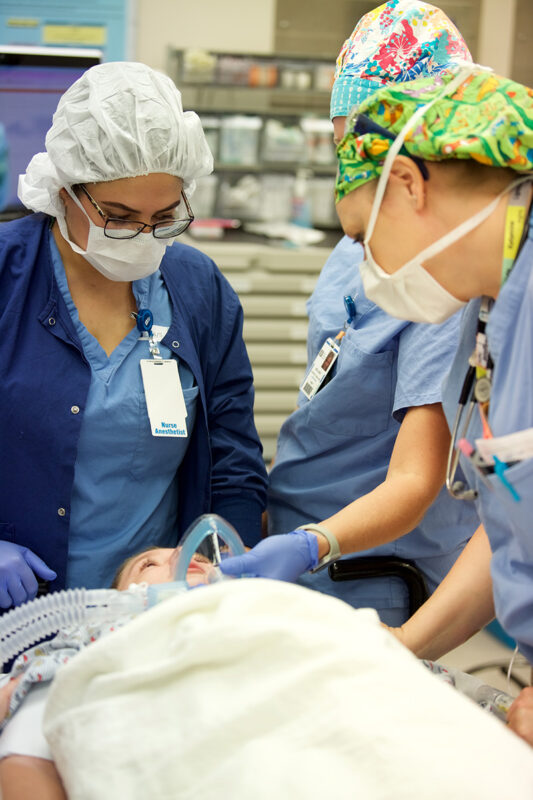
In health care, nitrous oxide in the OR is a leading producer of
greenhouse gas emissions.
Greenhouse gas emissions and their effect on climate change are important topics around the world, as organizations from a variety of industries aim to reduce their carbon footprint. In health care, operating rooms are one of the top areas that generate greenhouse gases.
“Nitrous oxide, which is used in a lot of anesthetics, especially in pediatrics, is the biggest offender,” said Tarun Bhalla, MD, MBA, chair of anesthesia and pain medicine at Akron Children’s. “Through a program known as WAGER – Waste Anesthesia Gas Emissions Reduction – we are doing our best as an organization and as a department to reduce greenhouse gas emissions.”
The WAGER program started in April 2022, following the collection of baseline data from December 2021-March 2022. The entire anesthesia team is more mindful of the gases that are used, reducing their use of nitrous oxide whenever possible and using low-flow techniques for all types of anesthesia gases.
Peggy Allen, MD, pediatric anesthesiologist, and Tabitha Cline, MSN, APRN-CRNA, pediatric nurse anesthetist, are co-leaders of this project. Amanda Patterson, clinical analytics coordinator, plays an integral role in collecting and analyzing an enormous amount of data surrounding the usage of nitrous oxide per provider. Those who reduce their nitrous oxide usage are acknowledged and rewarded at various intervals.
“We continue to show progress in reducing our nitrous oxide usage in the OR,” said Dr. Allen. “We have sustained a 40% reduction in our nitrous oxide use, despite increasing OR minutes of anesthesia. In April 2023, we used the lowest amount of nitrous oxide since the start of this program and have reduced our overall fresh gas flows in total.”
The 40% reduction in nitrous oxide translates to 13,000 fewer liters per month, which saves greenhouse gas emissions equivalent to 82,130 miles of local driving. Along with being better for the environment, using less nitrous oxide generates cost savings, while maintaining outstanding patient care. Low-flow anesthesia techniques have also been found to reduce the loss of natural heat and humidity in the lungs during surgical procedures, which is beneficial to patients.
Dr. Allen is a member of the Society for Pediatric Anesthesiologists’ Special Interest Group for Sustainability. This work has led to Akron Children’s joining a multi-institution quality improvement study to reduce anesthesia greenhouse gases, known as Project SPRUCE Forest. This project was piloted at Seattle Children’s Hospital, where they successfully reduced carbon emissions by 87% and annually saved more than $140,000 in anesthesia gases.
“We are all recognizing the importance of doing our part to improve the environment, while continuing to provide excellent patient care and reduce costs,” said Dr. Allen. “We are moving in the right direction to minimize our greenhouse gas impact from the operating room.”










